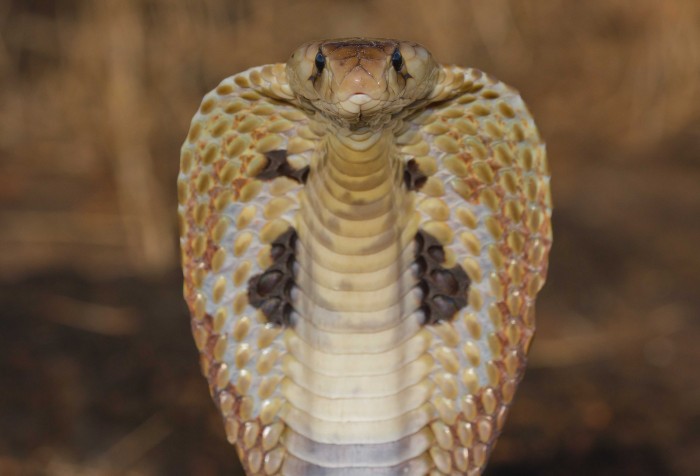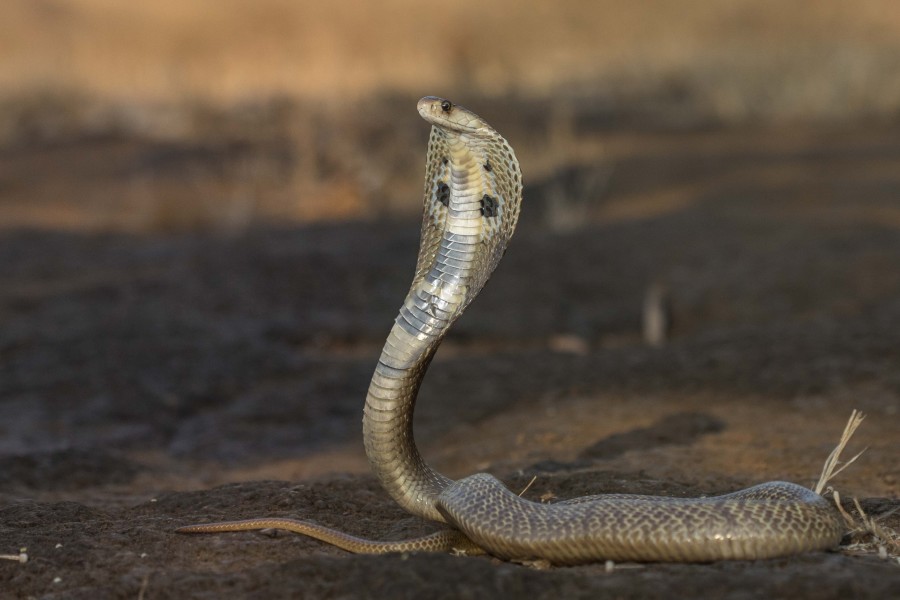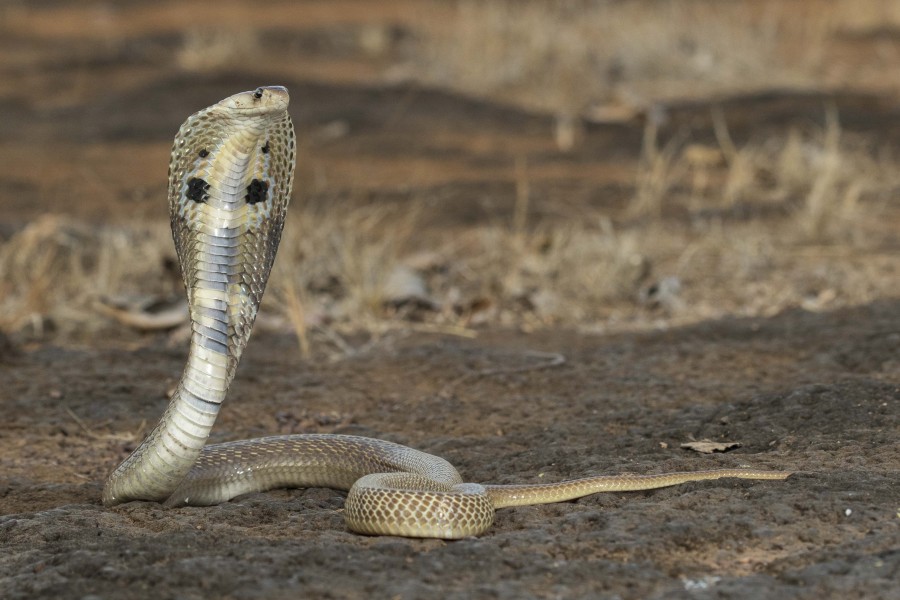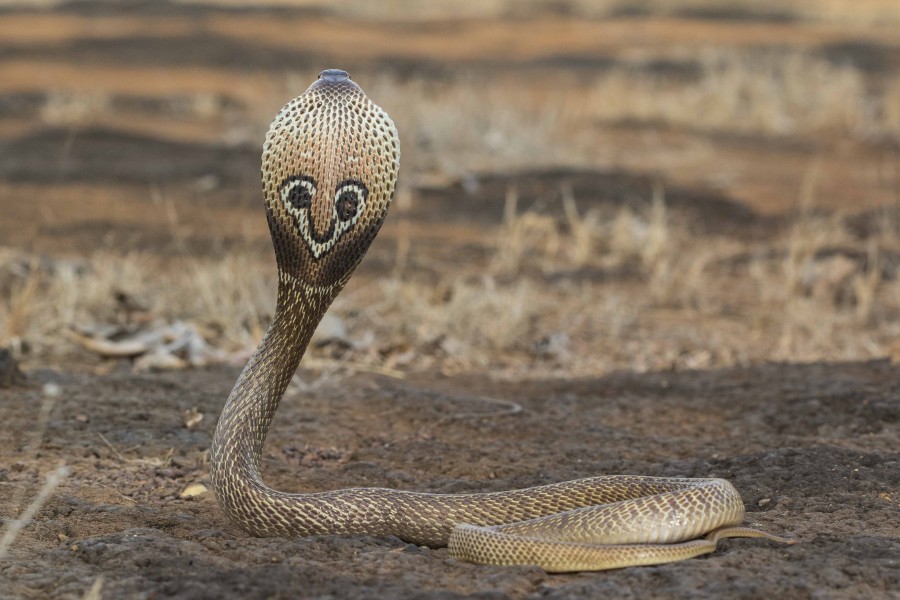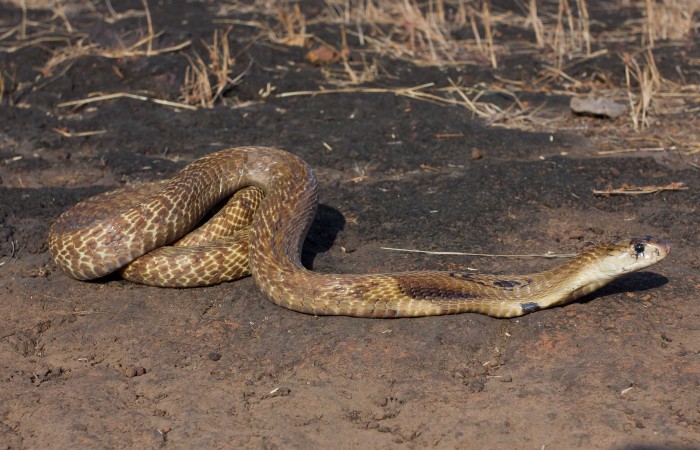Click on the images themselves to load them in high resolution
Average length: 4-5 feet.
India’s most famous snake is also one of the commonest species that is found in Goa. I have caught at least 300 cobras in the twelve years I’ve been working as a snake rescuer.
Of the Big Four venomous snakes, the Spectacled Cobra is the easiest to handle, one reason being its fairly predictable nature: sway any object some distance in front of a poised cobra and it will immediately start swaying its head to follow the motion. So engrossed will the snake be in the moving object that should you put your hand behind the snake’s head and touch it on the hood, the creature will not react at all. In fact, it will actually allow you to push its head all the way to the ground and pin it before it figures out what happened!
Now you know how snake show performers are able to kiss cobras on the top of their hoods and get away with impunity, leaving you completely awed.
Another reason why cobras make for easy snakes to handle is due to the innately non-aggressive nature of this species. The snake expert Irula tribe from Tamilnadu commonly refers to this species as “Nalla Pambu,” meaning “good snake”, since it always dishes out ample warnings to its would-be aggressors before actually making a strike.
In fact, the whole idea of the snake flaring its signature hood is to warn its enemies to stay away. The stretched skin of the hood is held open by the elongated ribs of the third and following 27 vertebrae and the action serves to make the snake appear larger than it is. When coupled with a few mock strikes and loud hissing noises, the demo will keep even the most ardent of predators (or trouble-making humans) at bay!
Funnily, almost the entire Indian population believes otherwise and remains mired in the belief that cobras open and sway their hoods in response to music!
The fact of the matter is that cobras (like all other snakes) are tone deaf. When a snake charmer plays his bheen (or flute), the cobra is merely following his swaying movements, totally oblivious all the while of the music emanating from the instrument.
Being one of the most famous of snakes in the world, it is no surprise that the cobra should have a host of myths associated with it.
Most people, for example, are terrified of cobras as they believe these snakes seek revenge. Other myths would have you believe that if you kill a cobra, its dying eyes invariably capture an image of your face. The surviving mate arrives later, takes a look at the picture of the murderer and carries it with it till the opportunity arrives for payback.
I have no problems with people believing these myths since they make people think twice before they think of killing a cobra and saves, in the bargain, a decent number of other species that might also be mistaken for cobras.
Here are some more tall stories:
1. Cobras carry a diamond on their heads.
2. Old male cobras are supposed to have long whiskers, like cats.
3. Cobras mate with ratsnakes and beware the person who witnesses the mating: he or she will go blind instantly!
Wish the real world of cobras would be as enchanting as that.

